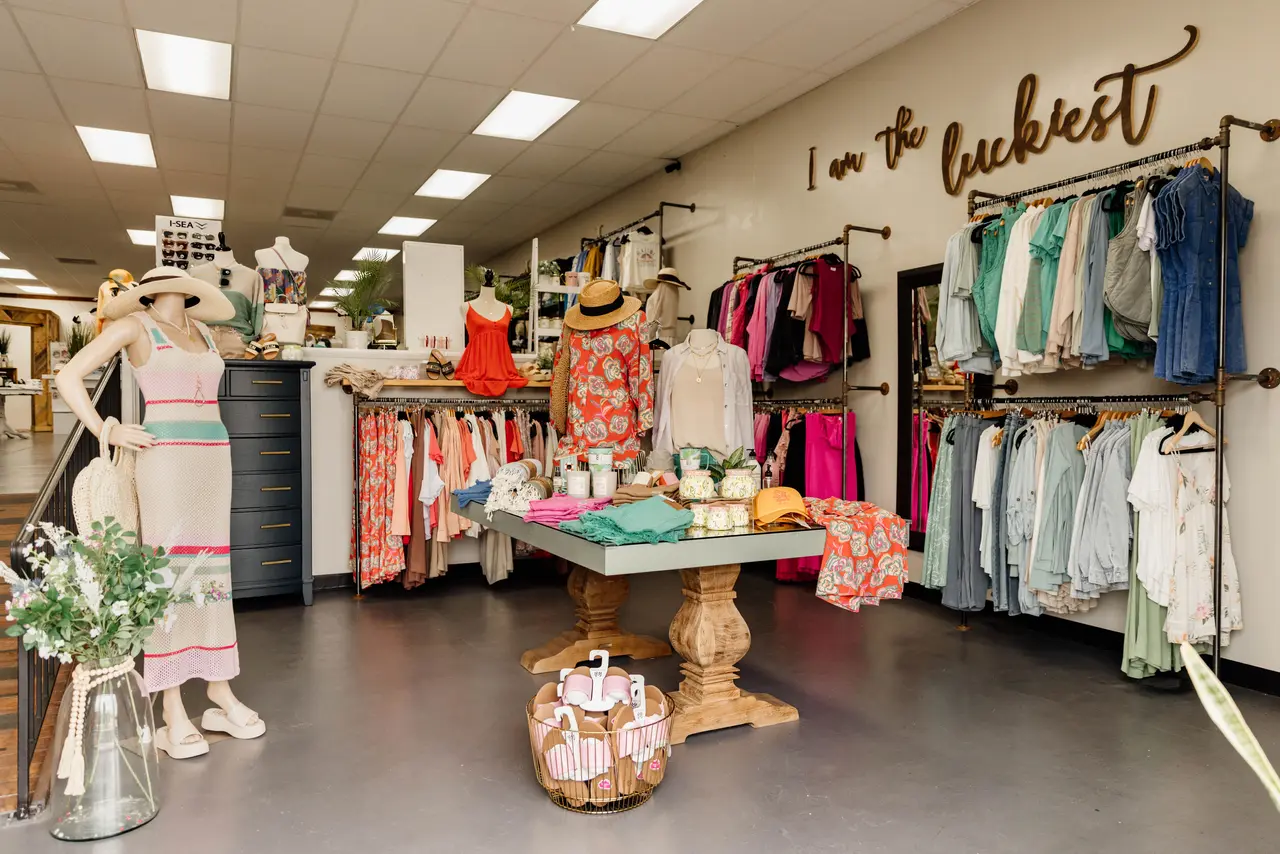Introducing the Tricks Behind Cost Effective Boutique Fashion
Introducing the Tricks Behind Cost Effective Boutique Fashion
Blog Article
Exploring the Advancement and Influence of Clothing on Modern Fashion Trends
The development of clothes has significantly affected modern style trends, merging historical criteria with cutting-edge technologies. Renowned numbers like Coco Chanel and Yves Saint Laurent revolutionized the garment industry by introducing ideas that focus on comfort and access, which continue to reverberate today. On the other hand, technical strides in locations such as 3D printing and smart textiles are redefining layout opportunities and customer experiences. Furthermore, the growing emphasis on inclusivity and sustainability is reshaping sector standards. As we take into consideration these multifaceted impacts, one must doubt just how these elements jointly redefine fashion's role in reflecting and shaping modern culture.
Historical Style Influencers
In the tapestry of fashion background, particular numbers have actually left an enduring mark, forming the patterns and designs that define whole ages. Coco Chanel, a cutting edge designer, redefined females's style by introducing comfy, stylish apparel that left from restrictive corsets.
Elsa Schiaparelli is another essential figure, renowned for her progressive designs that incorporated surrealist art, teaming up with Salvador Dalí to develop wayward pieces that tested standard aesthetics. Her cutting-edge use color and bold patterns resounds in modern fashion. Yves Saint Laurent, meanwhile, democratized haute couture with prêt-à-porter collections, bringing path designs to the masses and setting a precedent for modern-day ready-to-wear lines.
These enthusiasts, among others, not only changed style in their times but additionally set enduring fads that reverberate in today's garment industry, supplying a foundation whereupon contemporary designers continue to innovate and construct. Their legacies highlight the significance of creative thinking and bold in vogue's ever-evolving story.
Technical Developments in Style
In the middle of the dynamic landscape of the apparel industry, technical developments stand at the center of development, improving exactly how designers produce and consumers involve with style. The integration of 3D printing has reinvented design procedures, allowing developers to try out intricate structures and lasting materials that were formerly impossible. This innovation promotes fast prototyping, lowering waste and speeding up manufacturing times.

Smart textiles, embedding technology right into fabrics, are likewise changing the industry. Advancements like temperature-regulating and self-cleaning fabrics provide improved capability and convenience. Wearable modern technology, incorporating functions like health and fitness monitoring and interaction, adds a brand-new measurement to fashion, merging appearances with functionality.
Social Changes and Design
As technological improvements remain to reshape the apparel industry, social changes are similarly prominent, redefining style and consumer preferences. In the last few years, the rise of social networks platforms has actually increased the circulation of worldwide fashion patterns, permitting varied cultural impacts to assemble and coexist. This electronic interconnectivity has assisted in the fast exchange of concepts, causing a much more diverse and inclusive interpretation of design that reflects the complex nature of contemporary society.
Social understanding and appreciation have actually triggered designers to attract ideas from a wider spectrum of historic and ethnic contexts, integrating conventional motifs with contemporary visual appeals. This blend has caused fashion that resonates with a wider target market, promoting a feeling of identity and belonging across different demographics. Additionally, the raising need for customization has driven brand names to provide personalized choices, making it possible for consumers to express uniqueness while mirroring their social heritage.
Furthermore, moving social worths have impacted style, with inclusivity and variety ending up being main styles. The market has actually begun to accept designs and influencers of different type of body, ethnic backgrounds, and gender identities, difficult traditional charm standards. This change highlights the power of cultural shifts in forming the future of style, as style ends up being a more authentic expression of personal and collective identification.
Sustainability and Modern Layout
While the fashion sector proceeds to progress, the imperative for sustainability has actually become significantly immediate, influencing modern layout techniques. The increase of sluggish style, which highlights high quality over amount, urges customers to spend in ageless pieces rather than short-term trends.
In addition, modern style is identified by its advancement in lessening waste and advertising circularity. This strategy not only alleviates environmental impact but additionally enhances the social duty of style residences.

Future Trends in Fashion

Sustainability will continue to be a driving force in shaping future fashion patterns. The sector is increasingly embracing environmentally friendly materials and honest manufacturing methods, replying to a growing customer need for liable practices. Advancements such as bio-fabricated products and closed-loop recycling systems are established to redefine how clothes is created and consumed, minimizing ecological influence while preserving design and high quality.
Social changes, including the surge of inclusivity and variety, will certainly also play a critical function. As society becomes more knowledgeable about social concerns, fashion is anticipated to end up being a platform for expression and adjustment. Developers will likely concentrate on creating collections that mirror a broader variety of identities and experiences, promoting depiction and availability.
Conclusion
The evolution of garments significantly influences modern style trends, where historic impacts merge with contemporary styles. This recurring evolution emphasizes fashion's function as a mirror to societal values and technical improvement, suggesting a future abundant with technology and inclusivity.
The development of clothes has dramatically affected modern style patterns, merging historic precedents with cutting-edge technologies.In the middle of the dynamic landscape of the style market, technical developments stand at the center of advancement, check these guys out reshaping just how designers develop and consumers involve with style.While the fashion market continues to progress, the crucial for sustainability has become significantly urgent, affecting modern layout methods. As sustainability comes to be embedded in modern-day design, Continue it leads the way for a much more responsible and mindful style sector.
The development of apparel considerably influences modern style fads, where historical impacts combine with contemporary layouts.
Report this page